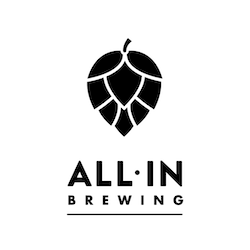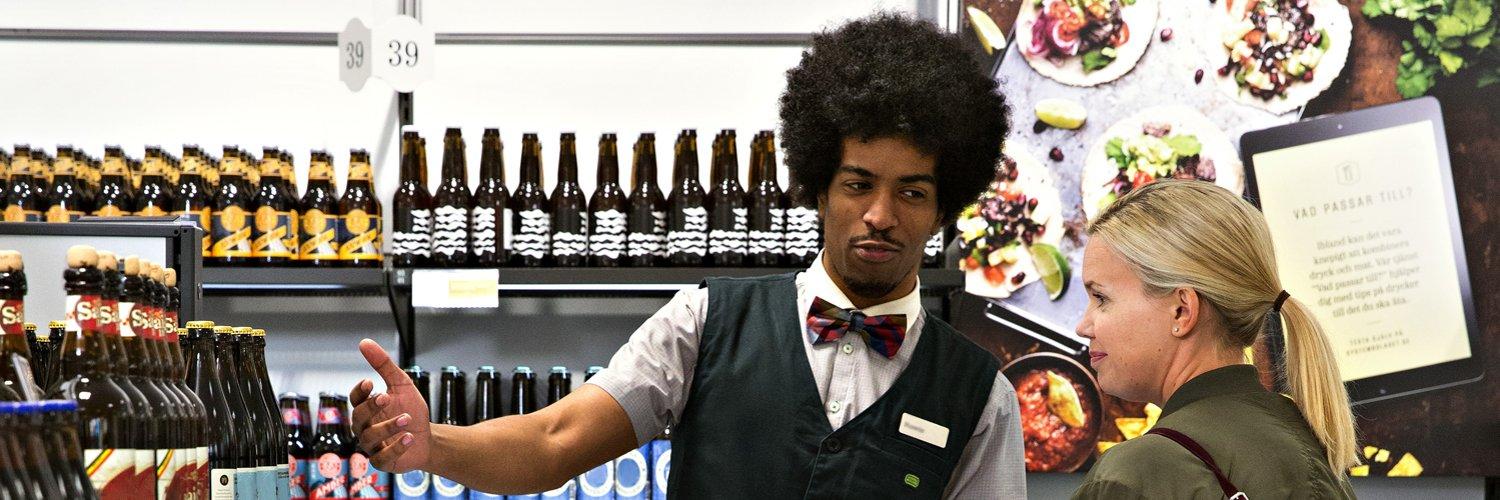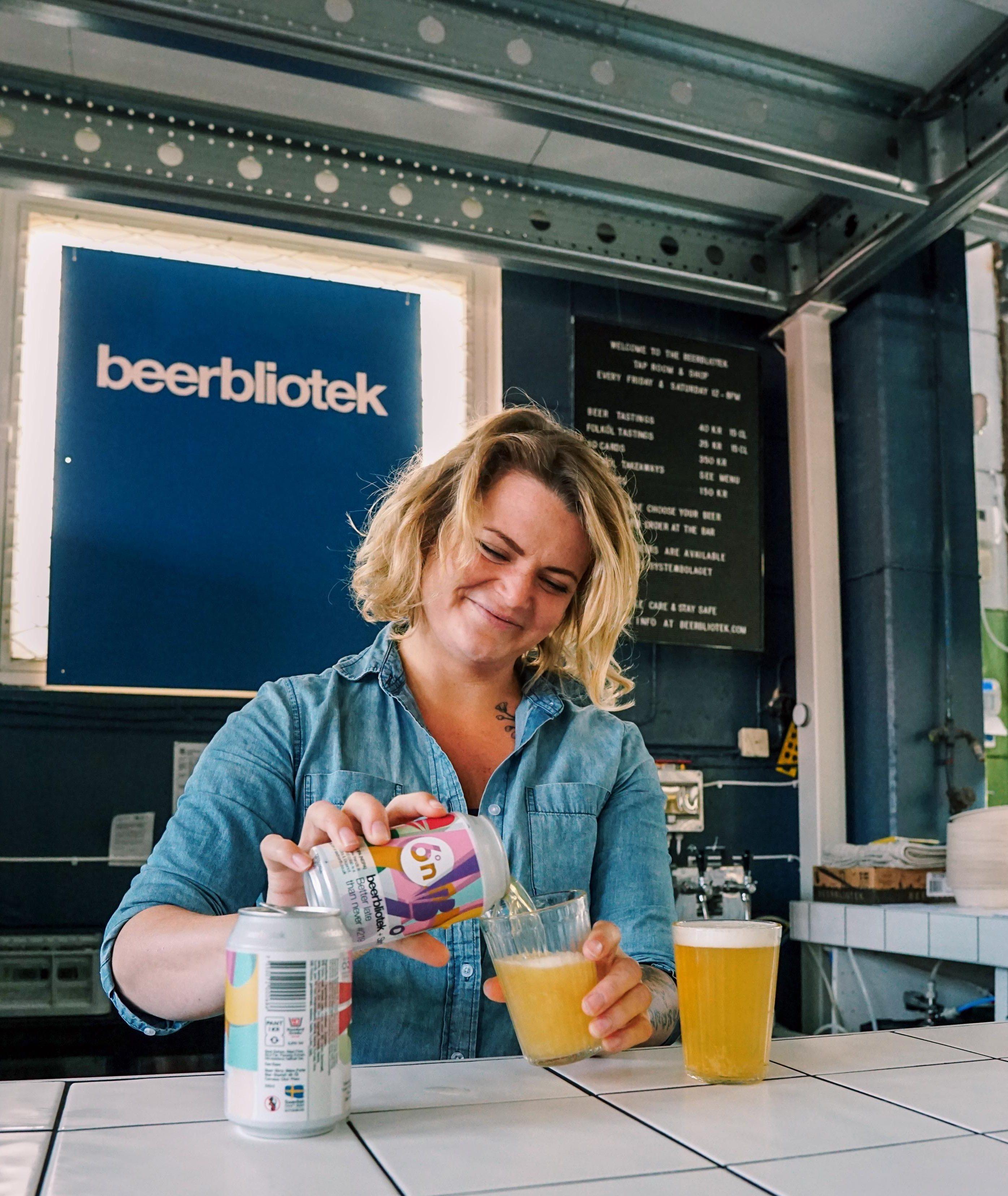Swedish Import Project
20 July 2021

Partnering up with Beerbliotek, we’re launching a project to explore the breweries of Sweden. On a regular basis we’ll bring over beers from Gothenburg’s Beerbliotek and a collection of their friends carefully selected by Richard and his team at Beerbliotek. Many of these breweries are pretty small and it would be difficult to import them in a cost effective manner, so working collectively we can showcase these exceptional Swedish beers.
Over the past few years we've been having fun exploring the country through imports from the likes of Brekeriet, Dugges, Duckpond, and Wizard. The scene in Sweden has fascinated with us and we're really excited to have developed an opportunity to delve into it further.

On this first drop we have beers from:

Beerbliotek - Gothenburg
Their name is a portmanteau meaning 'Beer Library', and after 300 different brews covering every style imaginable, it's hard to disagree.

Brewski - Helsingborg
Experts in the field of adjuncts, tonnes of fruit, van loads of vanilla, you name it, they've done it.

All In - Gothenburg
NEIPA focused brewery, but with a slightly more bitter edge.

Hyllie - Malmö
Focused on brewing with the seasons, and covering a wide range of styles.

An Otter/Benchwarmers - Råå
Sister breweries of each other. An Otter is the sour side of Benchwarmers who describe themselves as the mix between playfulness and damn good beer.

Stigbergets - Gothenburg
Among the best NEIPA producers in the world. Know their way around the adjunct shelf too.

While our roots are firmly attached to the European classics, it's been eye opening to work our way through this world of heavy adjuncts, and sleek 330ml skinny cans. We spoke with Richard Bull from Beerbliotek, and Hanna Gustavsson from Brewski to get more of an understanding of the Swedish beer scene.
Richard explains that when Beerbliotek set up in 2012 ‘everyone had five beers, a brown ale, a pale ale, some seasonals, and maybe a stout, but we brewed 40 different beers in that first year. NEIPA is the big thing here, as it is in the UK. But we choose to sit between the markets for pastry stouts and pilsners, we do everything. Our 300th beer was an 18% freeze distilled wheat wine.’

As you’ll no doubt see from the list of beers that have landed with us there’s a huge movement in Sweden for brewing heavily fruited sour beers. Hanna suggests that there may be some link to Swedish gastronomy in this ‘I suppose a lot of our desserts are quite fruity and tart, rhubarb pie, fresh fruit rather than marmalades and jams etc. Swedes have a big sweet tooth and we consume a lot of sour candy. Most of our sours are about 20-50% fruit, but like anything people probably start drinking highly fruited sours that don't taste like beer, then move on to something more elegant aged on fruit, then into lambics etc. It’s like the evolution with bitterness too, starting with NEIPA, then end up at West Coast’. Given its latitude, Sweden doesn't naturally grow a huge amount of fruit other than berries, but these breweries work with natural purées added on the cold side.

On making a start as a new brewery Richard explains ‘Sweden is totally different due to the monopoly. It’s much harder for breweries to get started. In the UK you can make what you want and sell it to whoever you like from your own door.’ The market in Sweden is structurally totally different to the UK as the entirety of the off trade in the country (for drinks over 3.5% ABV) is controlled by the state owned monopoly Systembolaget.
- Producers can’t sell directly to consumers (but are free to sell to the on trade).
- Promotions that encourage volume purchasing are not allowed.
- No product can be favoured over another, thus no beer is refrigerated (too expensive to refrigerate it all).
- All products are sold at the same margin.
- Minimum age for sales 20 years old, bars and restaurants serve from 18.

While this may sound like a dystopian nightmare for drinkers and producers alike the network of stores is set up to be led in part by consumer demand, and has an extremely wide list (currently over 4500 products in the beer category). Hanna explains that ‘Within the beer range there are different segments. The ‘Standard’ segment, a fixed shelf space which you are ”awarded” based on demand in anywhere between 350 and 15 stores, evaluated regularly so you might lose or gain a shelf, or the whole segment throughout the year. This is the sweet spot. Each store has a slot for their local brewers. There’s space for tenders too, where the buyers request fulfilment of a certain type of beer (i.e 20k btls of 6.5% Black IPA). To keep things interesting there’s also a special category too for one offs and fun stuff. Each segment has different rules and criteria.’

There are some geographical differences in Sweden that influence how people drink. For example in the Scania region in the South of the country consumers live a short drive from Denmark and Germany, where beer is much cheaper. Hanna finds that this is ‘typically the older generation, filling up on lager, but we are finding more and more of these people converting to local craft breweries.’
Unlike our domestic market, Hanna finds that in Sweden, bars are driven by a few chains where taps are half macro, and half rapidly changing craft. ‘These bars are aimed at hitting every person in the whole market, but convincing them slowly to try craft. And they’ve been amazing for converting people’. Typically speaking, Swedes aren't very sensitive to pricing for craft beer and people will have a 40cl beer for 150skk (£12.50 approx).

The expansion of the industry within Sweden has been extremely quick, growing from 50 breweries in 2014 to over 400 today. The beer scene is focused around Gothenburg, with a number of breweries and bars that only pour craft beer. But the trend is growing across the country and in Helsingborg, Brewski’s home town of around 120k people, there are 5 craft beer bars. ‘People are beginning to realise we will never win if we’re alone, it’s much better if there are more of us. You don’t have to go to the Brewski bar to drink Brewski. We all benefit from that and send guests to each other’s bars. The more people that drink craft, the more we benefit.’
With this spirit in mind, we're going to eventually run a reciprocal project, exporting the best and brightest of UK brewing to Sweden. We believe strongly in the benefits to the industry of drinking widely, and Hanna agrees 'I always think it’s relevant to drink other country’s beer for influence and what’s going on there translates to other places. We all know and see each other regularly too. It’s good to mix for the evolution of the industry'. So, dig in, and find something inspirational from Sweden.
